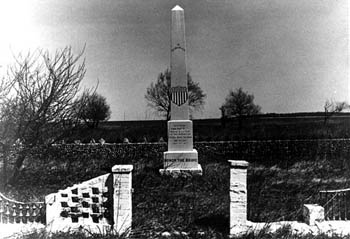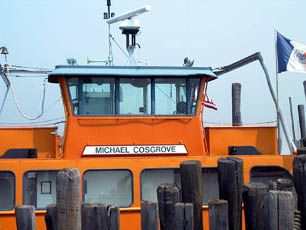| 1654 | On November 14, Thomas Pell of Fairfield, Connecticut buys a large track of land from the Siwanoy Indians, including what will become known as Hart Island. |
1774 |
Pell heirs sell to Oliver DeLancey what will become known as Hart Island. |
|
1775 |
Map refers to it as Heart Island, perhaps because of its seeming shape when seen from a boat circling it. |
|
|
1776 |
Maps start referring it as Hart Island. Other names have been Little Minneford Island and Spectacle Island. |
|
|
1863 |
The 25th Calvary musters in during February, March, and April, the earliest known recorded mustering on the island of Union recruit units in Civil War. Facilities on the island housed between 2,000 and 3,000 recruits and over 50,000 men were trained there. |
|
|
1864 |
|
|
|
1865 |
|
|
|
The City of New York purchases Hart Island from the John Hunter family for $75,000 for use by the Department of Public Charities and Correction to operate a City Cemetery. That agency, which already had parts of Ward's Island assigned to it, is given jurisdiction over additional Ward's lands. |
|
|
1869 |
Forty-five acres at the northern end opens as a Potter's Field on April 20. The first person interred is Louisa Van Slyke, aged 24, who died alone in the Charity Hospital on Blackwell's Island (now Roosevelt Island). Fred Bartels is the first warden. His wife records all burials during her husband's tenure. In the first year, 1,875 burials were performed. |
|
|
1870 |
Yellow Fever epidemic hits New York. The southern part of the island is used to isolate those infected. |
|
|
1877 |
The New York City Army Reserve constructs a monument, dedicated May 10, to honor the Union Civil War soldiers and sailors interred on the island. The Rebo Post 44 of the Grand Army of the Republic conducts Memorial Day services annually in honor of the twenty veterans buried in the Soldier's plot. |
|
|
1895 |
A branch workhouse is established for drug addicts and aged or infirm inmates. It will remain in use until World War II. |
|
|
1903 1904 |
Brush fires destroy wooden markers designating gravesites in Potter's Field, Hart Island, prompting NYC DOC to begin using cement markers. |
|
|
1905 |
Established by Chapter 305 of the Laws of 1905 is the New York City Reformatory for misdemeanants occupying the buildings on Harts Island that were formerly an old insane asylum. The Reformatory for Misdemeanants is more generally referred to as the reform school for "vicious boys." |
|
|
1913 |
The site for the NYC Reformatory in New Hampton, Orange County, is acquired for replacement of the Hart Island institution. |
|
|
1914 |
The first boys are moved on March 8 from the Hart Island reformatory to the replacement being set up in New Hampton. |
|
|
1916 |
The Reformatory at New Hampton is completed in 1916 and Hart Island institution is renamed Reformatory Prison. . . .Remains of some Union troops who died on the island are removed to the Soldiers Cemetery at West Farms, the Bronx, on May 30. |
|
|
1922 |
Kyle & Purdy builds a coal stoker to ferry people, bodies, and goods from the Fordham St. slip on City Island to Hart. The ferry is named the Fordham and will continue in serviced until 1982. | |
|
1941 |
 The remains of another group of Civil War Union dead are disinterred, this group being removed to Cypress Hills National Cemetery in Queens. . . . During WW II, the Island is turned over to the Navy for use as a disciplinary barracks for Navy, Coast Guard and Marine personnel, with as many as 2,800 servicemen in custody. In fact, probably the closest WWII ever gets to the shores of America comes when three German soldiers surfaced in a U-Boat near Long Island. They are taken into custody and imprisoned for a time on Hart Island
The remains of another group of Civil War Union dead are disinterred, this group being removed to Cypress Hills National Cemetery in Queens. . . . During WW II, the Island is turned over to the Navy for use as a disciplinary barracks for Navy, Coast Guard and Marine personnel, with as many as 2,800 servicemen in custody. In fact, probably the closest WWII ever gets to the shores of America comes when three German soldiers surfaced in a U-Boat near Long Island. They are taken into custody and imprisoned for a time on Hart Island
|
|
|
1946 |
Hart Island is returned to the Correction Department and the jail is reactivated. |
|
|
1948 |
In cooperation with the custodial staff, inmates erect a 30-foot high monument in the center of the burial site. On one side is engraved a simple cross; on the other the word "Peace." |
|
|
1950 |
On Jan. 26 a firm of architects is retained to draw up plans a new Rikers Island Workhouse. The project becomes to known by its 1950 city capital budget designation: C-76. . . . The Board of Estimate authorizes the use of the island for the rehabilitation of homeless men in 1950. |
|
|
1954 |
NYC jail system overcrowding prompts the Correction Dept. to regain use of Hart Island facilities as a Branch Workhouse to relieve inmate population pressures on the Rikers Island Workhouse for which the planned C-76 facility is to be the replacement. |
|
|
1955 |
United States Army Air Defense Command declares as operational its Nike missile battery NY-15, the only missile site within to New York metro area to be located entirely on two offshore islands. The missiles launchers are in silos on Hart but the ground-based guidance and control system is based on nearby Davids Island, part of New Rochelle. |
|
|
1961 |
 A two diesel-engine ferry is built by Blount Marine in Warren, Rhode Island. The 139-ton boat measures 60x35x9 and is named the Michael Cosgrove for an official of the municipal marine agency. . . . Battery "D" of the Army's 1st Battalion, 55th Artillery -- the second and final unit to command the Nike missiles site -- holds its final inactivation ceremonies on June 30.
A two diesel-engine ferry is built by Blount Marine in Warren, Rhode Island. The 139-ton boat measures 60x35x9 and is named the Michael Cosgrove for an official of the municipal marine agency. . . . Battery "D" of the Army's 1st Battalion, 55th Artillery -- the second and final unit to command the Nike missiles site -- holds its final inactivation ceremonies on June 30.
|
|
|
1962 |
On July 23, DOC opens a new Hart facility for the housing family court cases and traffic offenders using the Army's prefabricated, steel Utica-style barracks, left behind after the Nike base was closed. The Army's diesel-powered electrical generation facility is used and operated by inmates. |
|
|
1966 |
Penal Code changes lead to ending correctional use of the Hart Island and planning begins for using to rehabilitate drug addicts. Phoenix House will thrive there until 1976. |
|
|
1976 |
The Phoenix program is discontinued and the Island returns to the Correction Department. |
|
|
1982 |
Housing for a small contingent of inmates opens. |
|
|
1991 |
The use of Hart for inmate housing ends but cemetery operations continue with day work units from Rikers. |
